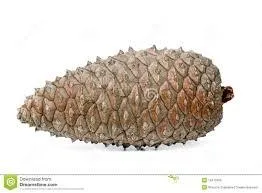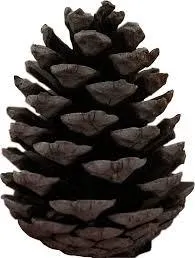Serotiny, n, (Botany)
In botany, serotiny means “following” or “later.”
Serotinous leaves follow flowering on plants: ex. redbud trees leaf out after the flowers on the branches fade.
Serontinous flowers follow the growth of leaves forming serotinous fruit (cones) that release their seeds over an extended period of time or only in the face of environmental triggers. In California, South Africa, and Australia, plants with serotinous fruit include many species of pines, all cypress and sequoia, some spruce, and eucalyptus.
In California, serotinous fruit is an ecological adaptation to regular wildfires. The “fruit” are the cones held high in the canopies of needled trees that can exist for years as sealed containers until bursting open and dispersing seed. These seeds are held in cones by a resin that coats the outside of the cone and glues the “petals” of the cone together. The heat of fire will melt the resin, unfolding the petals and releasing the tiny seeds. The germination of these seeds following fire replenishes the forest with new plant material. The science of “Fire” as an environmental trigger event is called pyriscence, is used synonymously with serotiny and is the most studied case of trigger events.
Other potential trigger events include death of the parent plant or branch, wetting or too much water, excessive sun exposure, drying atmosphere, and fire followed by very wet conditions.
Plants that have leaves and flowers at the same time and drop seeds at maturity during a
growing season are termed coetaneous.
EXAMPLES: CLOSED and OPEN CONES



